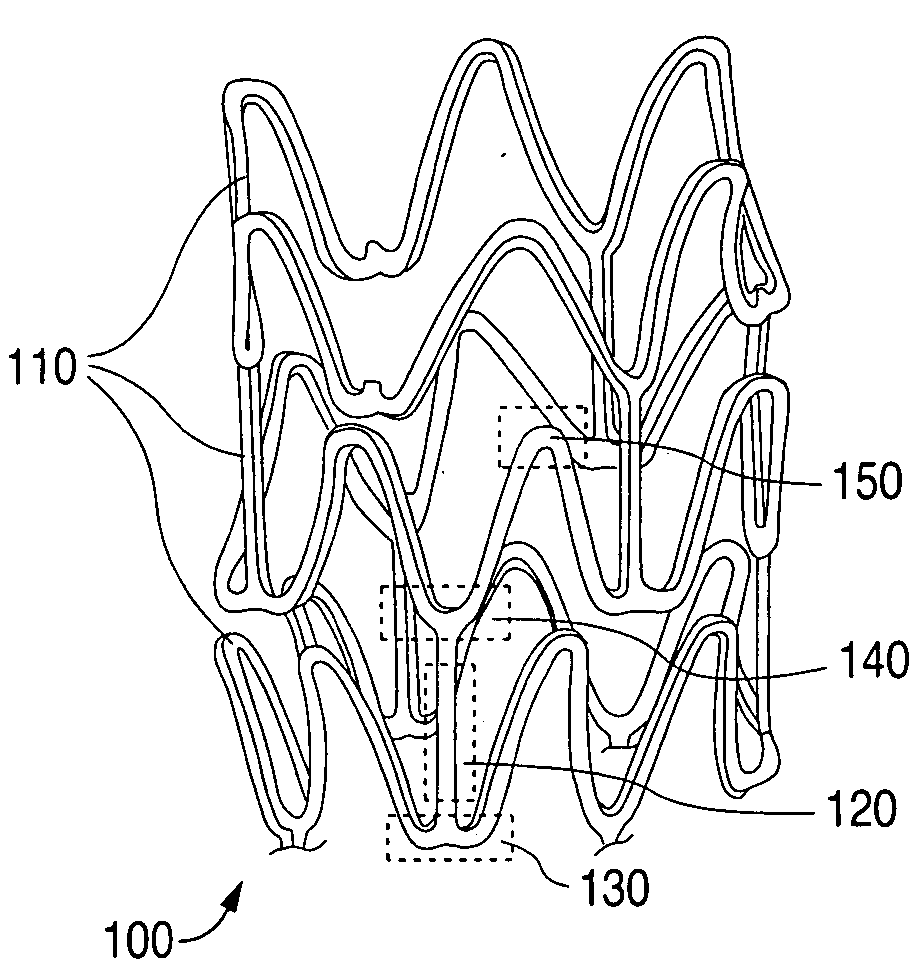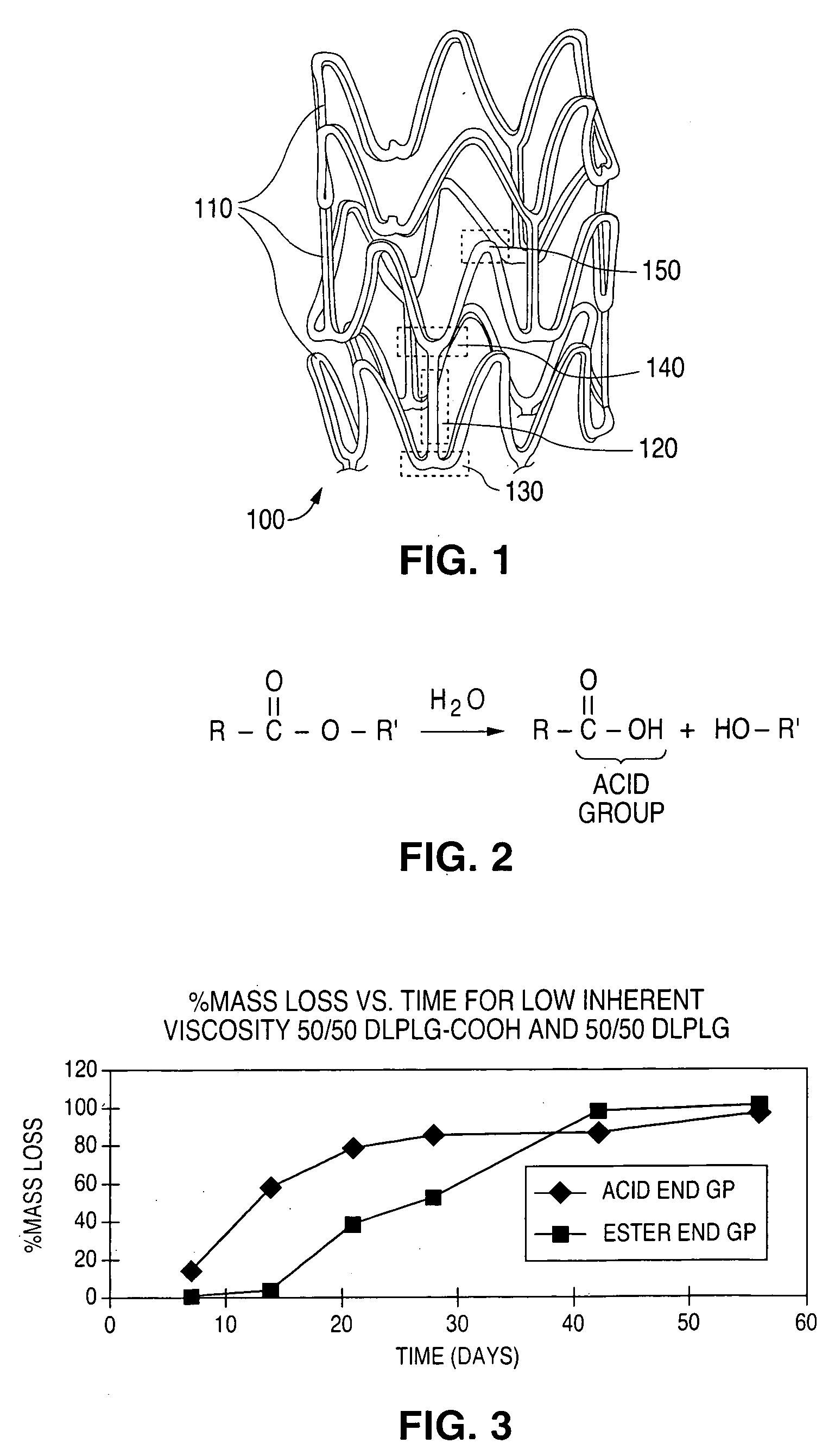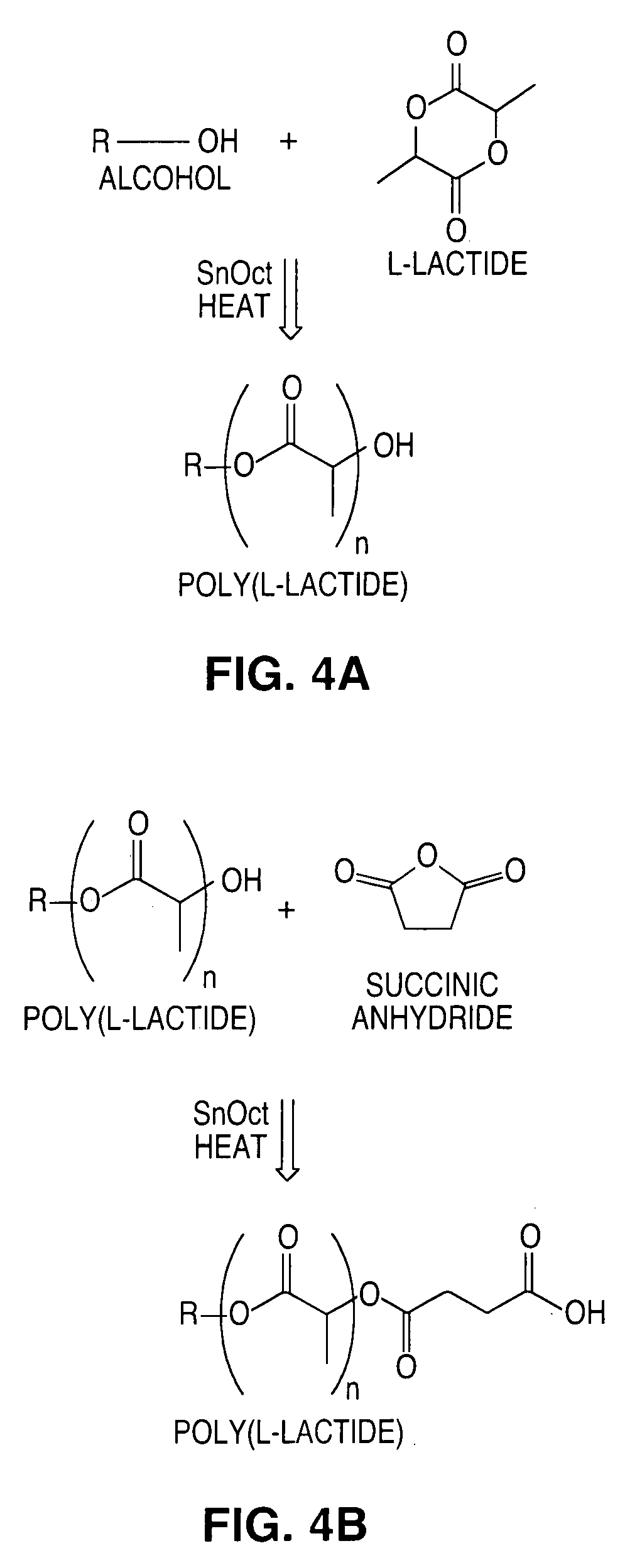Controlled degradation of stents
- Summary
- Abstract
- Description
- Claims
- Application Information
AI Technical Summary
Benefits of technology
Problems solved by technology
Method used
Image
Examples
Embodiment Construction
[0053]The various embodiments of the present invention relate to modifying or controlling the degradation of implantable medical devices that are fabricating in whole or in part from biodegradable polymers. Embodiments involve controlling or modifying the degradation rate and degradation time of biodegradable devices. The present invention can be applied to implantable medical devices including, but not limited to, self-expandable stents, balloon-expandable stents, stent-grafts, and grafts (e.g., aortic grafts).
[0054]In particular, a stent can have a scaffolding or a substrate that includes a pattern of a plurality of interconnecting structural elements or struts. FIG. 1 depicts an example of a view of a stent 100. Stent 100 may be formed from a tube (not shown). Stent 100 includes a pattern of structural elements 110, which can take on a variety of patterns. The structural pattern of the device can be of virtually any design. The embodiments disclosed herein are not limited to sten...
PUM
| Property | Measurement | Unit |
|---|---|---|
| Length | aaaaa | aaaaa |
| Length | aaaaa | aaaaa |
| Fraction | aaaaa | aaaaa |
Abstract
Description
Claims
Application Information
 Login to View More
Login to View More - R&D
- Intellectual Property
- Life Sciences
- Materials
- Tech Scout
- Unparalleled Data Quality
- Higher Quality Content
- 60% Fewer Hallucinations
Browse by: Latest US Patents, China's latest patents, Technical Efficacy Thesaurus, Application Domain, Technology Topic, Popular Technical Reports.
© 2025 PatSnap. All rights reserved.Legal|Privacy policy|Modern Slavery Act Transparency Statement|Sitemap|About US| Contact US: help@patsnap.com



